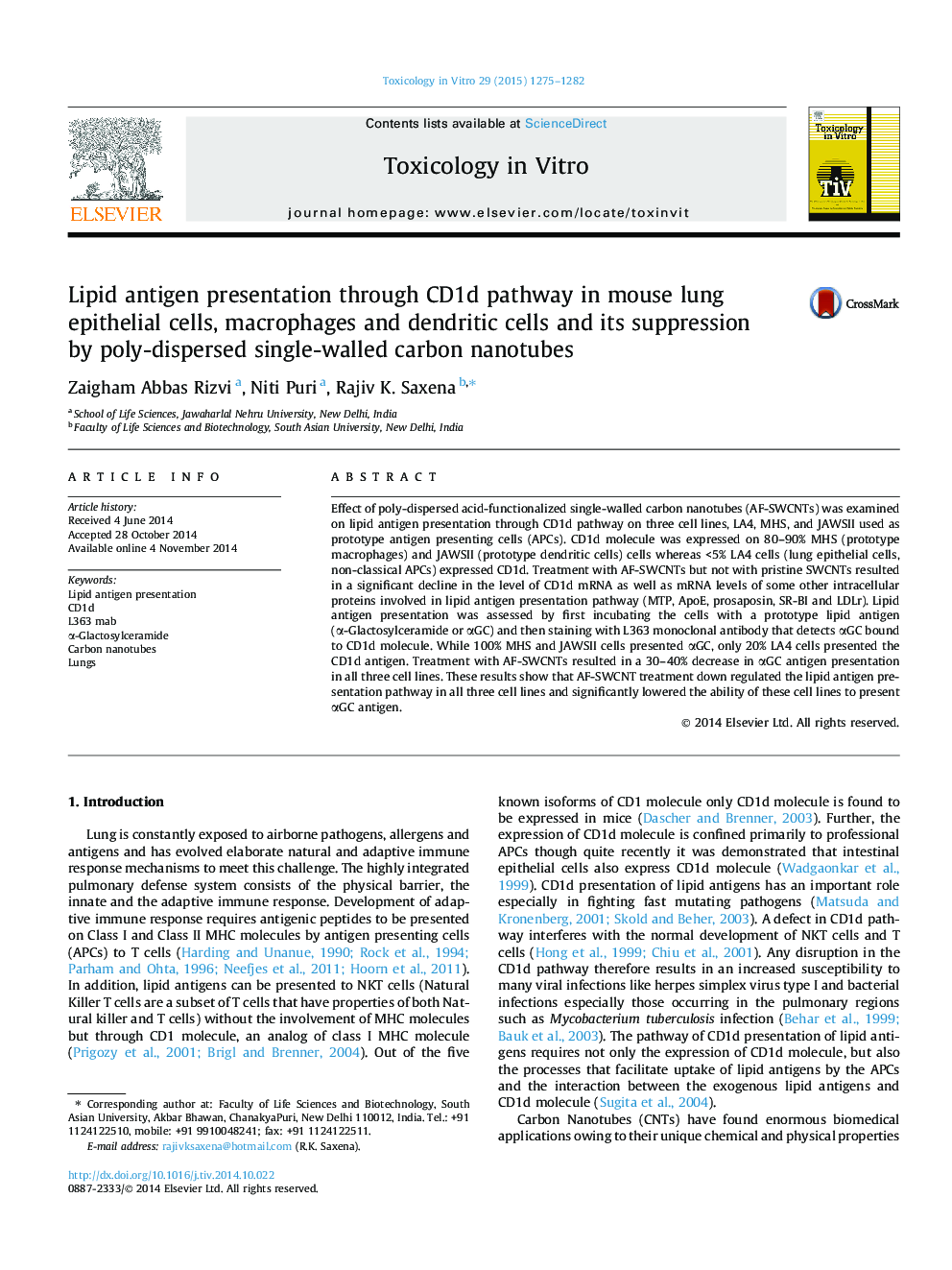| Article ID | Journal | Published Year | Pages | File Type |
|---|---|---|---|---|
| 5861352 | Toxicology in Vitro | 2015 | 8 Pages |
â¢CD1d lipid antigen presentation was examined in MHS, JAWSII and LA4 cell lines.â¢All cells effectively presented the prototype lipid antigen α-Glactosylceramide (αGC).â¢Poly-dispersed carbon nanotubes suppressed mRNA levels of presentation molecules.â¢Î±GC presentation was also suppressed by poly-dispersed carbon nanotubes.
Effect of poly-dispersed acid-functionalized single-walled carbon nanotubes (AF-SWCNTs) was examined on lipid antigen presentation through CD1d pathway on three cell lines, LA4, MHS, and JAWSII used as prototype antigen presenting cells (APCs). CD1d molecule was expressed on 80-90% MHS (prototype macrophages) and JAWSII (prototype dendritic cells) cells whereas <5% LA4 cells (lung epithelial cells, non-classical APCs) expressed CD1d. Treatment with AF-SWCNTs but not with pristine SWCNTs resulted in a significant decline in the level of CD1d mRNA as well as mRNA levels of some other intracellular proteins involved in lipid antigen presentation pathway (MTP, ApoE, prosaposin, SR-BI and LDLr). Lipid antigen presentation was assessed by first incubating the cells with a prototype lipid antigen (α-Glactosylceramide or αGC) and then staining with L363 monoclonal antibody that detects αGC bound to CD1d molecule. While 100% MHS and JAWSII cells presented αGC, only 20% LA4 cells presented the CD1d antigen. Treatment with AF-SWCNTs resulted in a 30-40% decrease in αGC antigen presentation in all three cell lines. These results show that AF-SWCNT treatment down regulated the lipid antigen presentation pathway in all three cell lines and significantly lowered the ability of these cell lines to present αGC antigen.
